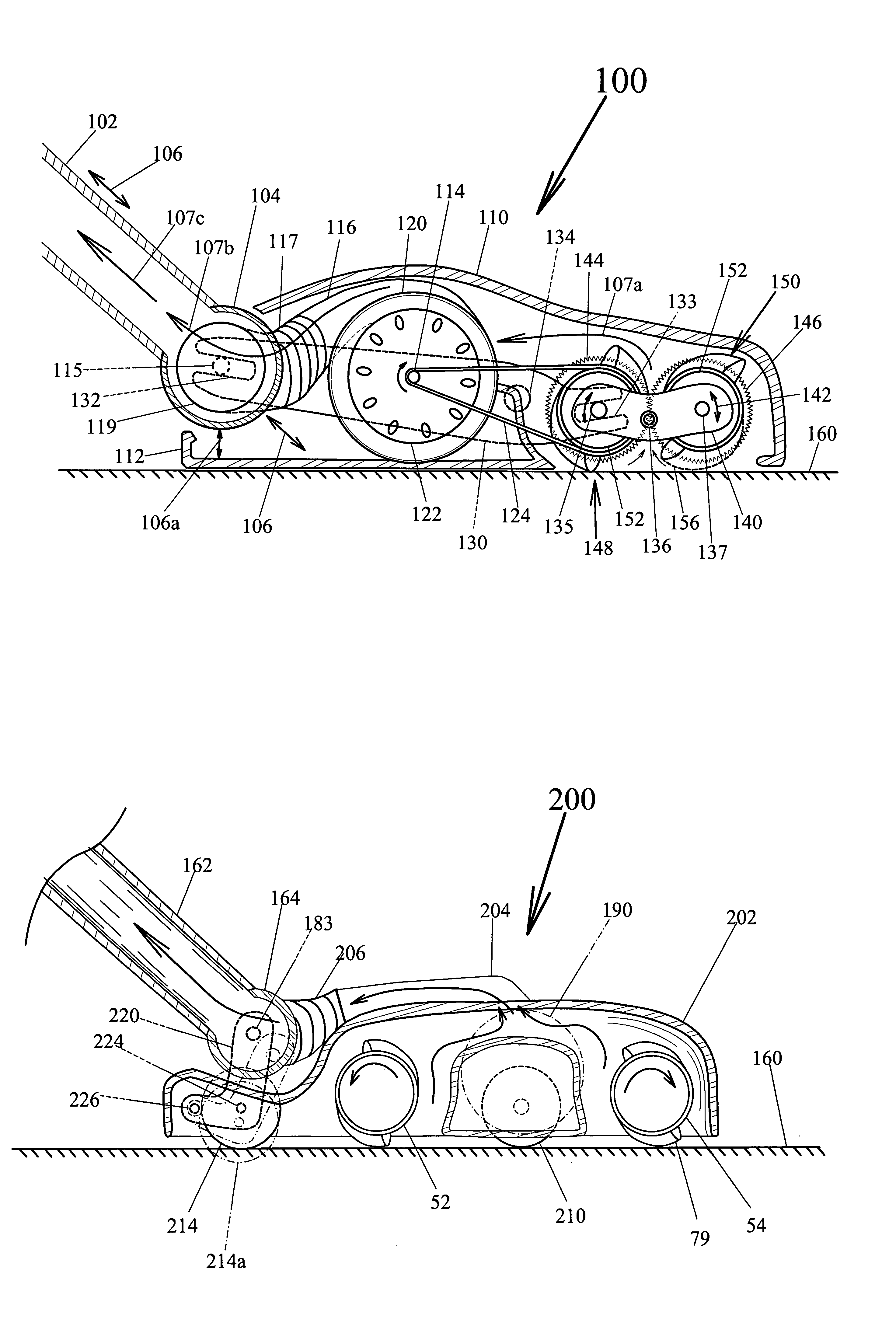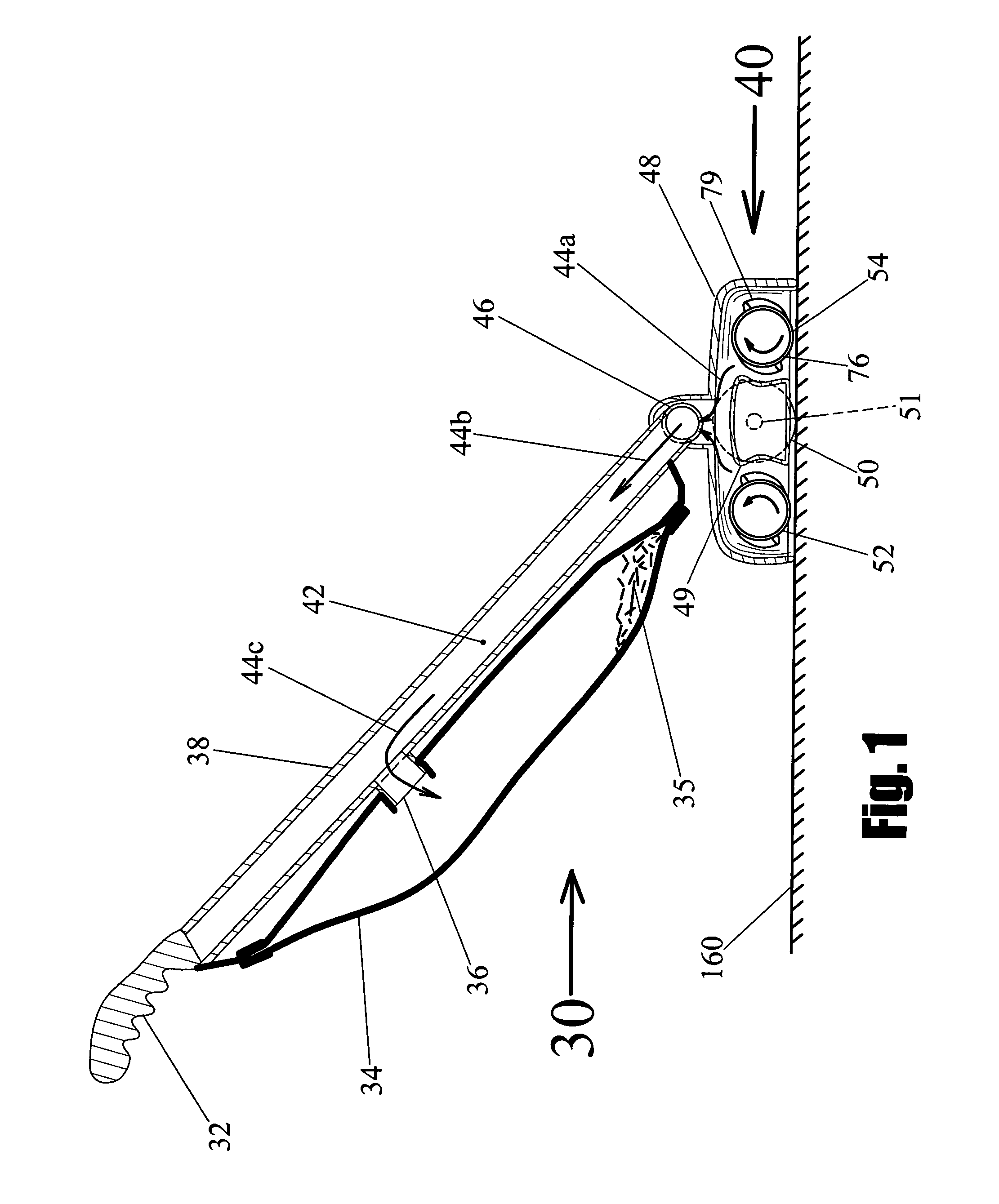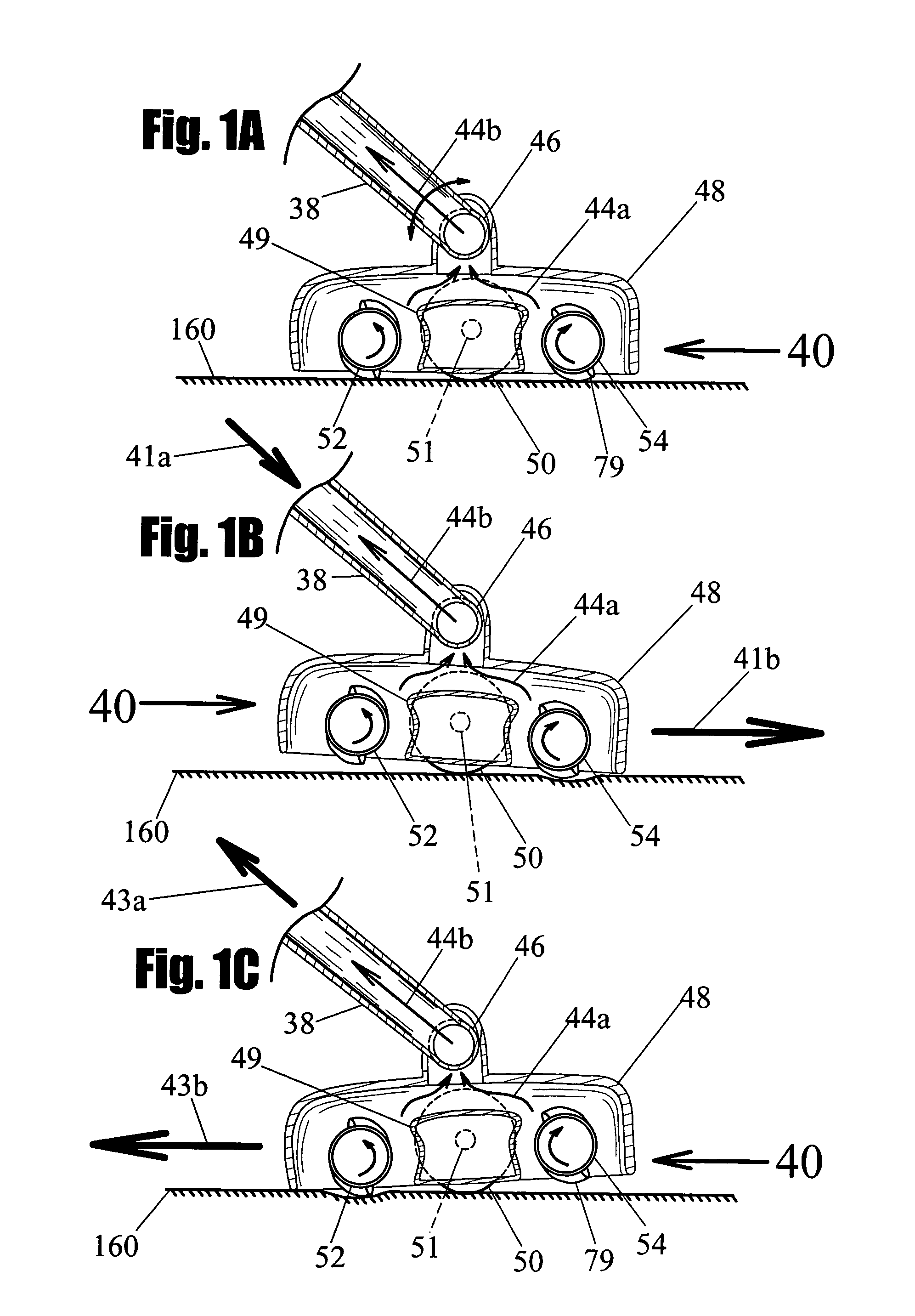Light-weight self-propelled vacuum cleaner
- Summary
- Abstract
- Description
- Claims
- Application Information
AI Technical Summary
Benefits of technology
Problems solved by technology
Method used
Image
Examples
Embodiment Construction
[0021]The use of vacuum cleaners for cleaning floors is well known. Vacuums are made in many different styles and types. A basic vacuum design includes a handle portion (which normally includes a dirt collection bag), and a vacuum power head. The power head generally comprises a rotary agitator, an agitator motor, and a pivoting attachment to the handle portion. This pivoting attachment sometimes includes an air conduit for passing dust from the power head to the collection bag. All the designs show here, show the air conduit built into the handle, however, a separate air conduit may easily be used to connect the collection bag and the power head. This would eliminate the need for the air conduit to pass through the handle pivot joint. The suction motor and suction fan that provide the airflow to transfer dust to the bag can be mounted in the handle portion or in the power head portion depending on the style of vacuum it is, or external to both the handle portion and power head, as ...
PUM
 Login to View More
Login to View More Abstract
Description
Claims
Application Information
 Login to View More
Login to View More - R&D
- Intellectual Property
- Life Sciences
- Materials
- Tech Scout
- Unparalleled Data Quality
- Higher Quality Content
- 60% Fewer Hallucinations
Browse by: Latest US Patents, China's latest patents, Technical Efficacy Thesaurus, Application Domain, Technology Topic, Popular Technical Reports.
© 2025 PatSnap. All rights reserved.Legal|Privacy policy|Modern Slavery Act Transparency Statement|Sitemap|About US| Contact US: help@patsnap.com



